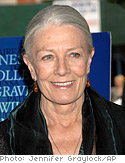Vanessa Redgrave's Aha! Moment

The actress was filming Isadora. She was drained. She could barely walk. Then, thanks to Beethoven, and to what her body could do without her, she danced to the occasion.
When I was 8 years old, my parents enrolled me in the Rambert School of Ballet in London. I attended classes there four times a week until I was 14. It took an hour's walk and four bus rides to get to and from the school, but these classes were the most important thing in my life. My idea was that if I worked hard enough, I might be admitted into the corps de ballet of London's Sadler's Wells theater.Once a year, I was taken to see the prima ballerinas Margot Fonteyn, Beryl Grey, or Anya Linden dance Giselle, Sleeping Beauty, or Swan Lake. I read and reread the autobiographies of dance legends Tamara Karsavina and the great, wild Vaslav Nijinsky. I dedicated myself so deeply to the hours of exercises, repeated until I was ready to drop on the floor, that no matter how exhausted I was, my body would come alive. It would respond to my command—or, more exactly, to the commands of the teachers: "Now we'll do this six more times…and one two three!"
But as each month went by, I got taller and taller, and one day I went to the full-length mirror in my mother's closet and I could no longer see my head. This was the collapse of my dream of being one of 20 identical swans hopping in arabesque formation across the stage of the Royal Opera House. So I took classes to train as an actress.
My drama school had no singing training, so my parents paid for me to study with Jani Strasser, a brilliant coach who worked at the Glyndebourne opera house. Again, there were many repeated exercises, both vocal and physical. Each time I sang a phrase—eight times up the scale and eight times down, then up a semitone, and repeat the whole thing—I was to sing it as if for the first time. "O hills and dales of childhood, to thee I now return!" My attention wandered to why I wanted to sing that phrase.
One day Jani gave me a new insight: People sing, he explained, because their feelings are too strong to be limited to speaking. Another day he urged me on by saying, "You must feel as if you have diarrhea!" I was reluctant to summon up that humiliating loss of control over the body, but Jani explained, "You must stop listening to yourself, trying to control the sounds. Your body is like a team of poodles. They will learn to obey everything you tell them, but they are more clever than you are. If you will let them off your leash, they will do so much more than you say."
Skip forward. I am 30 years old and starring in Isadora, the film biography of Isadora Duncan, the American dancer who turned the world of dance upside down at the beginning of the 20th century. The choreographer, Litz Pisk, and I have been working together all summer and rehearsing every night after filming.
On this day, we are shooting Isadora dancing to Beethoven's Seventh Symphony. By the lunch break, I am exhausted. I do not believe I can walk, let alone do six or seven more takes of a two-minute dance sequence. Our director, Karel Reisz, sits me on a chair. "Listen to this," he says.
The orchestra plays a piece from a Dvořák symphony. Every muscle in my body melts. Karel says, "Right, now we will shoot." As I stand in position, Beethoven's wild stream of notes takes off, and so do I.
I have been taken outside myself. The energy in my body seems to know no limits. I am not commanding my body; the music is.
I do not know whether Karel and Litz put their heads together to find this solution for my exhaustion; I imagine so. But they knew what Jani had been trying to explain to me: Drop the leashes. Then see what you can really do. I understood that when I devoted myself to ballet as a child, and I understood it again when Beethoven's unbound poodles became my inspiration, forever.



